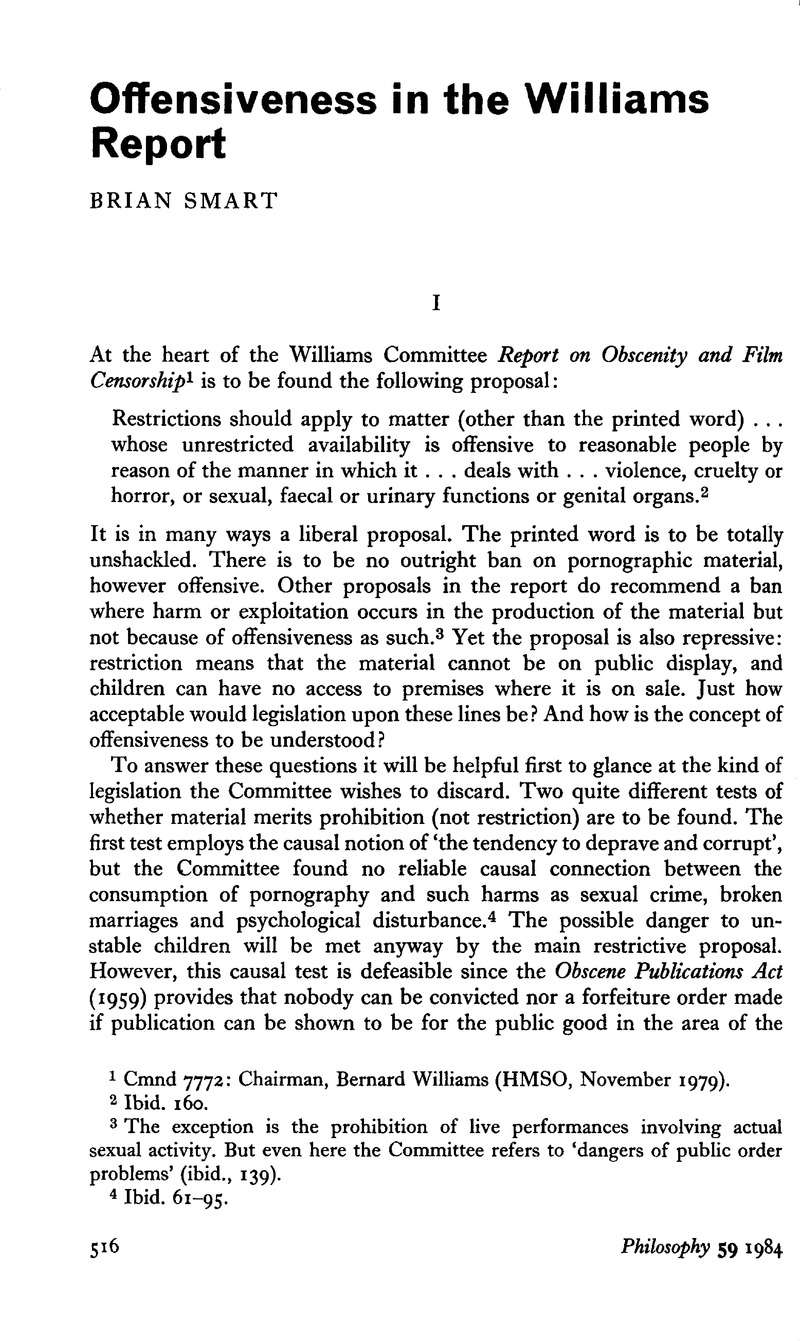No CrossRef data available.
Article contents
Offensiveness in the Williams Report
Published online by Cambridge University Press: 30 January 2009
Abstract

- Type
- Discussion
- Information
- Copyright
- Copyright © The Royal Institute of Philosophy 1984
References
1 Cmnd 7772: Chairman, Bernard, Williams (HMSO, November 1979).Google Scholar
2 Ibid. 160.
3 The exception is the prohibition of live performances involving actual sexual activity. But even here the Committee refers to ‘dangers of public order problems’ (ibid., 139).
4 Ibid. 61–95.
5 See Section 4 of the Act.
6 Report, 126, 134.
7 Ibid. 12–13.
8 Ibid. 9, 102.
9 Ibid. 102. For scepticism about this see Anthony, Skillen, ‘Offences Ranked: The Williams Report on Obscenity’, Philosophy 57 (1982), 237–245.Google Scholar
10 Ibid. 122.
11 Ibid. 123.
12 Ibid. 97.
13 We are not to forget the other recommendations for prohibition.
14 Ibid. 97
15 Ibid. 123.
16 Ibid. 124.
17 Ibid. 124.
18 Ibid. 127.
19 Ibid. 56.
20 Ronald, Dworkin, ‘Is There a Right to Pornography?’, Oxford Journal of Legal Studies I (1981), 199.Google Scholar
21 Report, 55.




